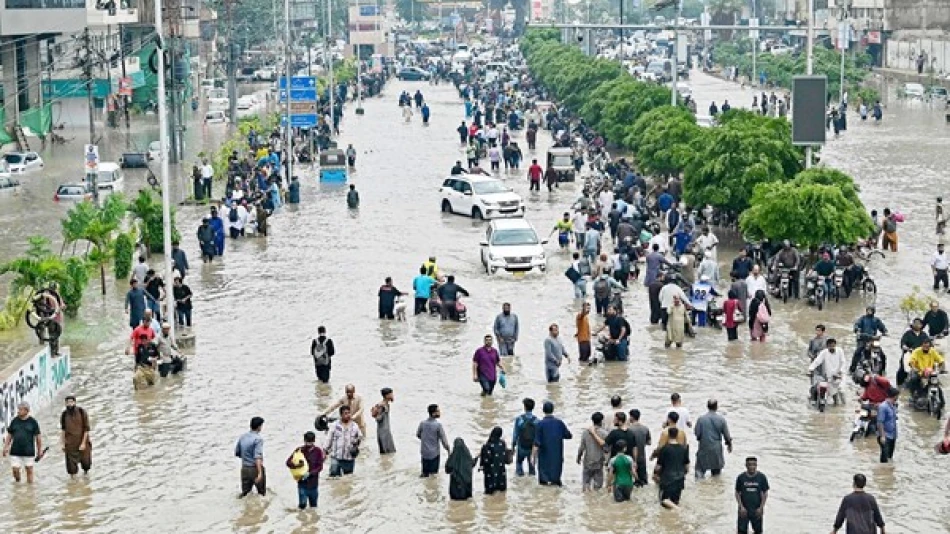
Pakistan Floods Claim More Lives Amid Worsening Disaster
Pakistan's Monsoon Crisis Deepens as Death Toll Reaches 365 in Five-Day Flooding Disaster
Pakistan is grappling with one of its most devastating monsoon seasons in recent memory, as flash floods and landslides have claimed 365 lives in just five days. The latest tragedy struck the mountainous northwest, where a torrent of rocks and water obliterated homes in a remote village, highlighting the country's vulnerability to extreme weather events that are becoming increasingly frequent and deadly.
Northwest Village Devastated by Rock Avalanche
The mountain village of Dalori Bala in Swabi district became the latest casualty of Pakistan's brutal monsoon season when a catastrophic landslide struck Monday morning. Nassar Khan, the district commissioner, confirmed that rescue teams have recovered 30 bodies from the debris, with nine others still missing after the sudden deluge.
The disaster unfolded with terrifying speed. Ali Zeeshan, a 20-year-old university student who witnessed the event, described hearing a "horrific, thunderous sound" around 8 AM. "Everything was swept away at once, in seconds," he recounted, capturing the lightning-fast nature of these mountain flash floods.
Local resident Bakht Zaman, 45, made a desperate plea from the devastated community: "We need help." His words underscore the isolation many rural Pakistani communities face when disaster strikes, often waiting hours or days for rescue teams to reach remote mountainous areas.
A Season of Unprecedented Destruction
This year's monsoon season has proven particularly lethal across Pakistan. The district of Bunir recorded over 150mm of rainfall in a single hour on Friday – an extreme precipitation event that killed 200 people in one of the deadliest single-day tolls of the current monsoon season.
Lieutenant General Inam Haider Malik, head of Pakistan's National Disaster Management Authority, revealed the staggering scope of the crisis: 695 people have died nationwide since late June, with rescue teams still pulling bodies from flood-affected areas across the northwest. More than 25,000 people have been evacuated from flood zones, requiring military and air force assistance in rescue operations.
Climate Patterns Signal Continued Danger
Pakistan's disaster management agency has issued warnings for continued monsoon rains through September 10, suggesting the crisis is far from over. This extended forecast raises concerns about additional casualties and the strain on already overwhelmed rescue resources.
Pakistan's Growing Climate Vulnerability
The current disaster reflects Pakistan's position as one of the world's most climate-vulnerable nations. The country regularly ranks among the top 10 countries most affected by climate change, according to the Global Climate Risk Index. Pakistan's geography – featuring both mountainous regions prone to landslides and river plains susceptible to flooding – creates a perfect storm for monsoon-related disasters.
The 2022 monsoon season, which affected over 33 million Pakistanis and caused damages exceeding $30 billion, demonstrated the country's limited capacity to handle extreme weather events. Despite international aid and reconstruction efforts, many communities remain exposed to similar risks.
Economic and Social Impact
Beyond the immediate human toll, these recurring disasters impose significant economic costs on Pakistan's already strained finances. Agricultural losses, infrastructure damage, and reconstruction expenses typically consume substantial government resources, while displaced populations require long-term support.
The mountainous northwest regions affected by current flooding are among Pakistan's most economically disadvantaged areas, with limited infrastructure and emergency services. This geographic and economic marginalization often translates into higher casualty rates and slower recovery times compared to more developed urban centers.
As rescue operations continue and the monsoon season extends into September, Pakistan faces the dual challenge of immediate disaster response and long-term climate adaptation – a test that will likely determine the country's resilience against future extreme weather events.
 Layla Al Mansoori
Layla Al Mansoori







